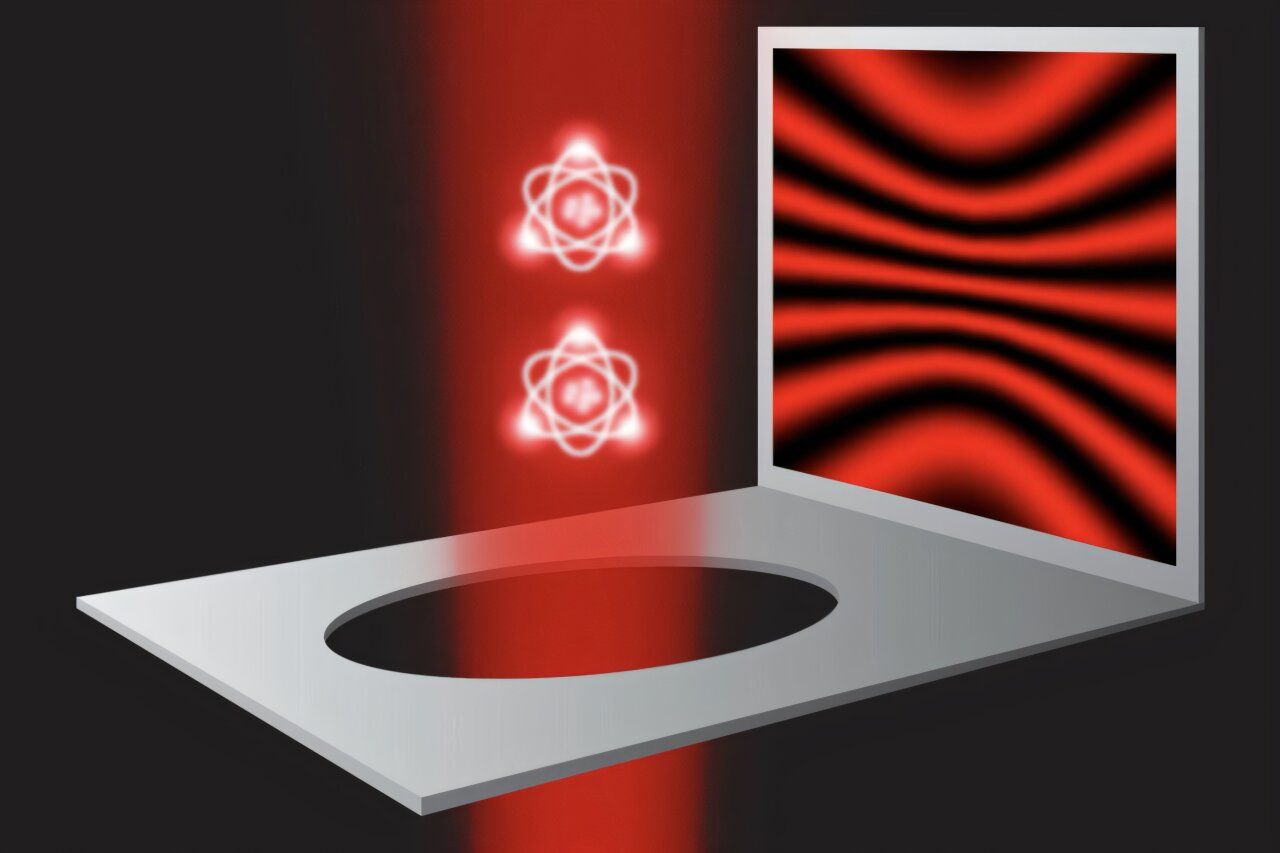💡 This new experiment shows Einstein was wrong about light
Follow us on Google News (click on ☆)
The MIT team revisited a classic experiment with unprecedented precision. By reproducing the famous double-slit experiment using individual atoms, they observed how light behaves at the quantum scale. Their results confirm quantum mechanics predictions while contradicting one of Einstein's intuitions.

Diagram of the MIT experiment: Two unique atoms in a vacuum chamber serve as slits. A laser illuminates the atoms, and the interference of scattered light is recorded by an ultra-sensitive camera.
Credit: Massachusetts Institute of Technology (MIT).
The double-slit experiment, originally designed by Thomas Young in 1801, shows that light can form interference patterns, typical of waves. However, when scientists try to determine which slit the light passes through, it behaves like a particle. This wave-particle duality is a cornerstone of quantum mechanics, yet it remains counterintuitive.
The MIT researchers pushed the experiment to its limits. By cooling atoms to temperatures near absolute zero, they could use them as perfect slits. Light, in the form of single photons, revealed its dual nature even more clearly than in previous versions of the experiment. The more they tried to track the photons' path, the less visible the interference became.
This study, published in Physical Review Letters, shows that the quantum 'fuzziness' of atoms plays a key role. Contrary to Einstein's belief, the mere uncertainty about the atoms' position is enough to blur the interference pattern, thereby confirming Bohr's predictions.
The team also conducted the experiment by releasing the atoms from their trap just before measurement and observed the same phenomenon. This suggests that light's fundamental nature doesn't depend on experimental details but on the core principles of quantum mechanics.
What is wave-particle duality?
Wave-particle duality is a fundamental concept in quantum mechanics describing how quantum objects, like light, can exhibit both wave-like and particle-like properties. This phenomenon is counterintuitive because, in our everyday experience, waves and particles appear as distinct entities.
Waves, like those seen on water surfaces, can superimpose and create interference patterns. Particles, on the other hand, like marbles, have well-defined positions and trajectories. Quantum mechanics shows that these two behaviors can coexist for the same object, depending on how it's observed.
This duality was first demonstrated with light but also applies to other particles, like electrons. It underpins many modern technologies, such as lasers and electron microscopes. Understanding this duality is crucial for exploring the limits of our comprehension of nature.
Why is the double-slit experiment so important?
The double-slit experiment is one of the most eloquent demonstrations of quantum mechanics principles. It shows in a simple and direct way how light, or other particles, can behave both as a wave and a particle depending on the experimental context.
When light passes through two narrow slits, it produces an interference pattern on a screen behind it, characteristic of waves. However, if one tries to detect which slit each photon passes through, the interference pattern disappears, and light behaves as a series of particles. This illustrates Bohr's complementarity principle, stating that wave and particle aspects are complementary and cannot be observed simultaneously.
This experiment has profound implications for our understanding of reality. It suggests that the act of observation influences the observed system, a concept that has fueled numerous philosophical and scientific debates. Modern versions of the experiment, like the one conducted by MIT, continue to test the boundaries of our understanding of quantum mechanics.